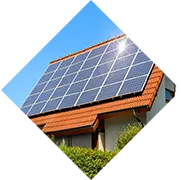Exploring the Benefits of Micro Tie Grid Inverters for Renewable Energy Solutions
Understanding Micro Tie Grid Inverters Boosting Renewable Energy Adoption
As the world increasingly shifts towards sustainable energy sources, innovative technologies are constantly being developed to enhance the efficiency and effectiveness of energy production and consumption. One such technology gaining traction is the micro tie grid inverter, an essential component of solar power systems. This article will explore the working principles, benefits, and applications of micro tie grid inverters and their pivotal role in promoting renewable energy.
What is a Micro Tie Grid Inverter?
A micro tie grid inverter is a type of inverter specifically designed to connect solar panels to the grid while allowing for the integration of energy storage systems. Unlike conventional inverters that may operate solely in grid-connected systems or standalone off-grid solutions, micro tie grid inverters have the unique capability of managing both the energy generated from solar panels and the energy drawn from the grid. They convert the Direct Current (DC) output of solar panels into Alternating Current (AC), which is necessary for grid utilization.
How Do Micro Tie Grid Inverters Work?
Micro tie grid inverters operate by converting the electricity generated from solar panels into a usable form for homes and businesses. When sunlight hits the solar panels, it generates DC electricity. The micro inverter takes this DC electricity and transforms it into AC electricity, which is then synchronized with the grid’s voltage and frequency.
The uniqueness of micro tie grid inverters lies in their ability to optimize energy production. By employing maximum power point tracking (MPPT), micro inverters can constantly adjust the output to ensure that the solar panels operate at their peak efficiency – even when conditions such as shading, temperature variations, or irregular panel orientations come into play.
Additionally, these inverters are often equipped with monitoring systems that track the performance of individual solar panels, providing users with real-time data on energy generation and system performance.
Benefits of Micro Tie Grid Inverters
1. Improved Efficiency Micro tie grid inverters enhance overall system efficiency by allowing each panel to operate independently. This means that if one panel is underperforming due to shading or dirt, it does not affect the output of other panels in the system.
micro tie grid inverter

2. Flexibility and Scalability These inverters are compact and can be easily integrated into existing solar installations. Homeowners and businesses can scale their solar systems by adding more panels and inverters to meet growing energy demands.
3. Enhanced Monitoring Capabilities With integrated monitoring technology, users can access detailed performance analytics through smartphone apps or web platforms. This transparency enables proactive maintenance and maximizes energy production.
4. Greater Reliability Micro tie grid inverters can provide a higher level of reliability since the failure of one inverter does not incapacitate the whole system. This modular design reduces downtime and enhances energy security.
5. Support for Energy Storage By facilitating the integration of battery storage systems, micro tie grid inverters allow users to store excess energy produced during the day for use during peak hours or when sunlight is unavailable.
Applications of Micro Tie Grid Inverters
Micro tie grid inverters are becoming increasingly popular in residential and commercial solar installations. They are particularly well suited for rooftop solar systems, generating electricity directly for household use while providing the option to send excess energy back to the grid. Additionally, they are being leveraged in larger commercial solar projects, where managing energy production from multiple arrays under varying conditions is crucial.
The residential market benefits significantly from micro tie grid inverters. Homeowners looking to install solar panels can enjoy the flexibility, monitoring capability, and improved efficiency that these inverters offer. Furthermore, as more homeowners embrace renewable energy, the installation of efficient solar systems becomes essential for energy independence and cost savings.
Conclusion
Micro tie grid inverters represent a significant advancement in solar technology, offering enhanced efficiency, flexibility, and monitoring capabilities. As the demand for renewable energy solutions continues to grow, these inverters will play a crucial role in facilitating the transition to sustainable energy. Ultimately, by integrating micro tie grid inverters into solar power systems, we can harness the full potential of solar energy, reduce greenhouse gas emissions, and move towards a more sustainable future.
-
Understanding the Advantages of Solar String Inverters for Your Energy SystemNewsApr.29,2025
-
Choosing the Right PV Inverter: A Comprehensive GuideNewsApr.29,2025
-
The Future of Solar Power: Exploring Bifacial Solar PanelsNewsApr.29,2025
-
The Complete Guide to Solar Panels: Efficiency, Cost, And InstallationNewsApr.29,2025
-
The Best Options for Efficiency and Cost-EffectivenessNewsApr.29,2025
-
Harnessing the Power of Off-Grid Solar Inverters for Energy IndependenceNewsApr.29,2025







